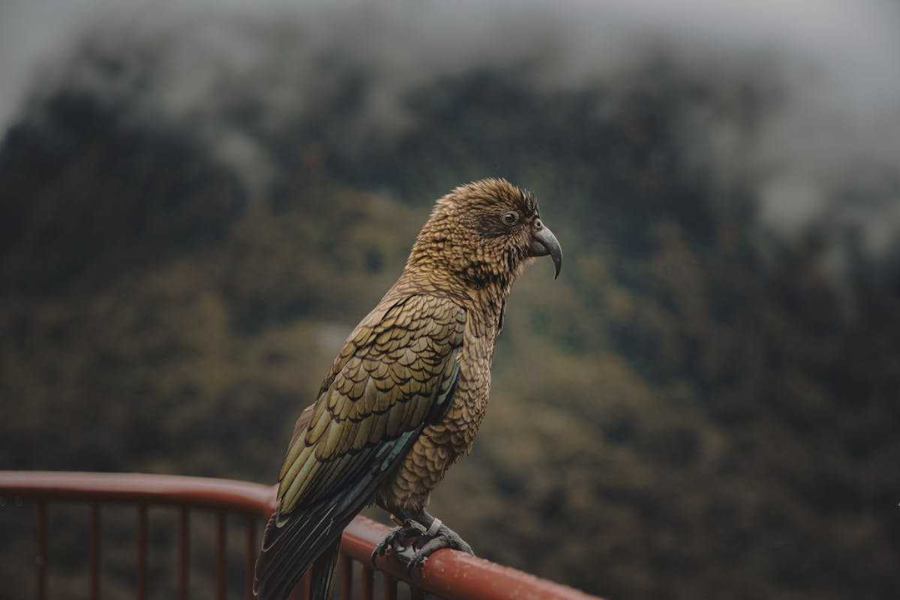The Origins and Mythological Significance of the Hancock Bird And More
The Hancock Bird, while not an actual species, represents a fascinating amalgamation of mythological themes and symbolic values. This mythical bird draws from various cultural traditions to embody ideas of freedom, transformation, and spiritual guidance. Although the Hancock Bird does not exist in the natural world, its conceptual presence has made a significant impact in mythology, art, and literature. This comprehensive exploration delves into its origins, symbolic meanings, and how it has been represented across different mediums.
Overview of the Hancock Bird
The Hancock Bird is a symbol crafted from a blend of mythological and symbolic elements rather than a real avian species. In various cultures, birds are often associated with divine or spiritual roles, and the Hancock Bird embodies several of these attributes. It merges characteristics of revered birds from different traditions, symbolizing values such as reason, might, and transcendence beyond the mundane. This symbolic bird, much like its mythological counterparts, is often seen as a guide, helping individuals navigate their spiritual journeys and symbolizing profound changes and growth.
The Symbolic Meaning | Natural History of Freedom & Transformation
Freedom and Transformation
The Hancock Bird is a powerful emblem of freedom and transformation. In nature, birds represent the ability to rise above physical constraints and soar into the sky, symbolizing liberation from earthly limitations. The Hancock Bird extends this symbolism, representing personal and collective transformation. Its ability to transcend physical barriers mirrors the human capacity to overcome challenges and evolve. This theme of freedom is reflected in the bird’s mythological role as a creature that teaches about overcoming obstacles and embracing change.
Resilience and Growth
The Hancock Bird also symbolizes resilience and growth. In literature and art, it often represents the journey of personal development and the quest for meaning in life. The bird’s depiction as a figure that rises after a fall or navigates through adversity underscores its role as a symbol of courage and perseverance. This representation resonates with audiences, encouraging them to embrace change and pursue self-improvement, even in the face of difficulties.
The Hancock Bird Habitat in Literature and Art
Artistic and Literary Symbolism
In the realms of art and literature, the Hancock Bird serves as a rich symbol for themes of growth, transcendence, and freedom. Writers and artists use the bird’s image to explore ideas of personal and spiritual evolution. For instance, in various literary works, the Hancock Bird symbolizes the process of ‘becoming,’ reflecting the journey of growth and self-discovery.
Artists portray the Hancock Bird in various forms, often emphasizing its beauty and the positive messages it conveys. Its flight is depicted as a metaphor for hope and motivation, inspiring others to reach their highest potential. Through its artistic representations, the Hancock Bird becomes a powerful symbol of transformation and aspiration.
Spiritual Significance: A Guide in Personal Journeys of Wildlife
Totem and Spirit Animal
In spiritual practices, the Hancock Bird holds significant meaning as a totem or spirit animal. It represents a desire for higher knowledge and a deeper understanding of life. For many, the bird symbolizes the quest to see beyond surface appearances and uncover deeper truths. As a guide between the earthly and otherworldly realms, the Hancock Bird plays a crucial role in meditation and spiritual practices, offering insights and encouragement for personal growth and enlightenment.
The bird’s symbolic attributes—vision, freedom, and resilience—serve as reminders of one’s ability to overcome obstacles and achieve higher states of consciousness. The Hancock Bird encourages individuals to pursue their spiritual goals and strive for self-improvement.
Environmental and Conservation Symbolism
Ecological Concerns
In contemporary contexts, the Hancock Bird symbolizes environmental and conservation issues. Birds often represent the state of the environment, and the Hancock Bird highlights the importance of conserving habitats and wildlife. Although it is a fictional creation, the bird serves as a reminder of the need to protect nature and address environmental challenges.
Conservationists use the symbolic presence of the Hancock Bird to advocate for habitat preservation and wildlife protection. The bird’s representation underscores the interconnectedness between humans and nature, emphasizing the importance of balancing ecological systems and addressing threats to biodiversity.
How to Incorporate the Hancock Bird’s Symbolism in Daily Life
Personal Reflection and Artistic Expression
Incorporating the symbolism of the Hancock Bird into daily life can be a meaningful practice. The bird’s attributes of freedom, courage, and transformation can inspire personal growth and self-improvement. Whether through meditation, artistic creation, or reflection, individuals can draw on the bird’s symbolism to enhance their lives.
Artists and writers often use the Hancock Bird as a source of inspiration for cultural artifacts and creative works. Its imagery can serve as a reminder of the potential for positive change and the pursuit of higher ideals. By embracing the bird’s symbolism, individuals can cultivate a deeper connection to their own journeys of transformation and self-discovery.
The Ecological Impact of Human Interaction on Birds
Conservation Efforts
Human activities have significant impacts on bird populations and their habitats. The Hancock Bird, though fictional, serves as a symbol of the need for ongoing conservation efforts. Habitat loss, climate change, and other environmental challenges threaten bird species worldwide. Addressing these issues requires collective action and a commitment to protecting natural ecosystems.
Conservationists and birdwatchers advocate for measures to preserve bird habitats and support biodiversity. The Hancock Bird’s symbolism highlights the importance of environmental stewardship and the need to balance human activities with ecological preservation.
Cultural and Spiritual Meanings of Birds Across the Globe
Diverse Symbolism
Birds hold diverse symbolic meanings across cultures and traditions. From the majestic eagle representing freedom and strength to the owl symbolizing wisdom, birds have inspired countless myths and stories. The Hancock Bird, while a modern creation, reflects these broader themes of avian symbolism, encompassing ideas of transformation, resilience, and spiritual guidance.
The bird’s mythical presence enriches our understanding of cultural values and spiritual beliefs, offering insights into how different societies interpret the natural world and its inhabitants.
Challenges and Triumphs in Modern Bird Conservation Efforts
Conservation Challenges
Modern bird conservation efforts face numerous challenges, including habitat destruction, climate change, and human encroachment. The Hancock Bird, as a symbol of resilience and beauty, represents the ongoing struggle to protect avian species and their environments. Public awareness and engagement are crucial for successful conservation initiatives, and the bird’s symbolic presence helps to inspire action and support.
By addressing conservation challenges and promoting awareness, we can contribute to the protection of bird species and their habitats. The Hancock Bird’s legacy serves as a reminder of the importance of safeguarding our natural world and ensuring the survival of diverse avian life.
Wrapping Up
The Hancock Bird, while a mythical creation, embodies profound themes of freedom, transformation, and spiritual enlightenment. Its significance spans mythology, art, and literature, offering insights into personal growth, environmental stewardship, and cultural values. Whether viewed as a symbol of resilience or a guide on spiritual journeys, the Hancock Bird continues to inspire and captivate those who seek to explore its deeper meanings. Through its legacy, we are reminded of the potential for change, the importance of protecting nature, and the pursuit of higher understanding.
Explore insightful articles and in-depth analyses on the latest trends and topics at leomorg.org.







